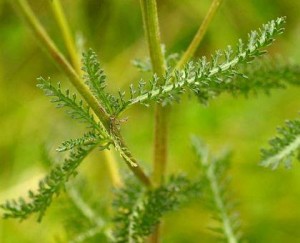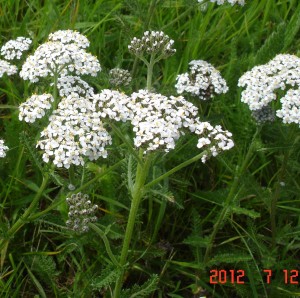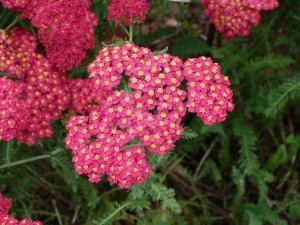Yarrow
Latin: Achillea millefolium
Irish: Athair thalún
This perennial native typically occurs in pastures and on roadsides and waste places. At Castlewarden, it can be found in the undisturbed areas of the practice ground and there is one plant surviving, though not flowering, on the mound to the right of the 18th green.
It is highly aromatic and has attractive, finely-divided leaves that have a feathery appearance. In late June and July it produces masses of small creamy white flowers in flat-topped clusters.
 Yarrow has a long history as a medicinal plant and was prized as an herbal treatment for stopping bleeding. Achilles, the Greek warrior, was reputed to have had yarrow applied to wounds made in battle hence the generic name – Achillea.
Yarrow has a long history as a medicinal plant and was prized as an herbal treatment for stopping bleeding. Achilles, the Greek warrior, was reputed to have had yarrow applied to wounds made in battle hence the generic name – Achillea.
Although it is still regarded s an edible and medicinal plant, a word of caution: extended use of this plant, either medicinally or in the diet, can cause allergic skin rashes or lead to photosensitivity in some people.
Today it is a species of considerable horticultural interest with several closely related types widely grown as colourful ornamentals such as that shown below right.

